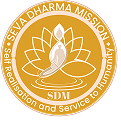
What is Namaskar?
Namaskar,” as practiced in Ananda Marga, is always done with the ideation of surrendering to Parama Puruśa within the other person, thus aligning it with non-dualistic (Advaitic) spiritual thought.
Tadekaḿ smarámah tadekaḿ japáma
Tadekaḿ jagatsáksiirúpaḿ namámah.
“If I remember anyone, I will remember only that One Entity and not many. If I repeat anyoneʼs name, I will repeat only the name of the Lord. If I ever salute anyone, I will salute only the Supreme One and no one else.”
The rule is, if you pay salutations to a human being, you should say “Namaskár”, but if you pay salutations to Parama Puruśa, you must say “Namaste.” Namaste means “I salute Thee.” Human beings are greeted with the word “Namaskára” because they are considered to be the expressions of the Supreme Being. They should not be greeted with “Namaste.” In the case of Parama Puruśa either “Namaste” or “Namaskár” is permissible.
The mental strength that develops through one-pointed concentration accelerates the speed of the aspirantsʼ minds. When they proceed towards Parama Puruśa with accelerated speed they are destined to reach Him.
Gesture and Physical Process of Namaskára
NAMASKÁR. A greeting in which the palms are held together and the thumbs touch first between the eyebrows (indicating the concentration of thoughts or goodwill) and then the mid-point of the chest (indicating the sweetness of sentiment). “I pay respect to the Supreme Entity residing within you.
